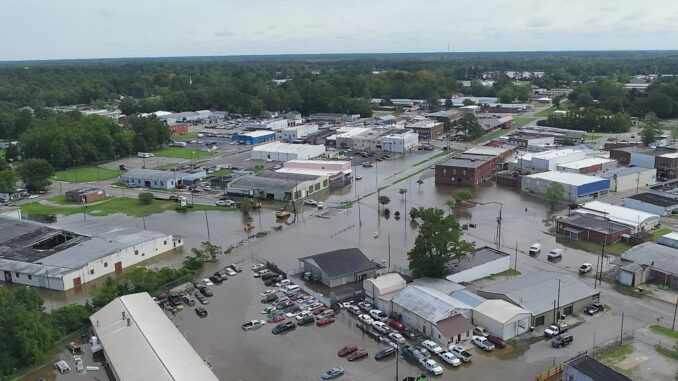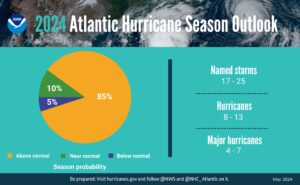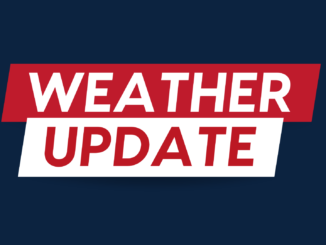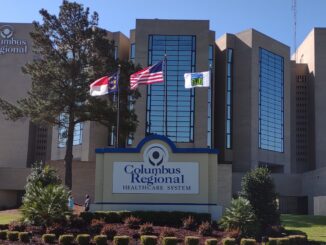
The National Weather Service is warning that this year’s hurricane season could be memorable, and not in a good way.
“Unfortunately, the outlook calls for an 85 percent chance that we will observe above normal tropical cyclone activity this season,” NWS Meteorologist Steve Pfaff said today (May 23).
The NWS said in its forecast for the upcoming season that conditions are prime for a very active season, with 17-25 named storms, eight to 13 of which could become hurricanes, with four to even major hurricanes of Category Three and above.
A normal hurricane season sees 14 named storms, including seven hurricanes and three major storms. Two major factors are contributing to the increased chances this year, Pfaff said. Ocean temperatures are warmer than normal, providing more energy for storm development, and the La Nina pattern is in place, reducing wind shear. Windshear inhibits development of storms by preventing concentration of energy, heat and moisture.
The forecast does not predict landfall, Pfaff cautioned, but the heightened activity should encourage preparations in storm-prone areas.
“Southeast North Carolina and Northeast South Carolina have a significant hurricane history,” he said, “due to our proximity to one of the main climatological tracks. That’s why we need to aggressively prepare for hurricane season each year.”
While the forecast could change due to shifts in windflow or a weakening La Nina, officials are confident the upcoming season will be busy. At the same time, Pfaff said, residents of storm-affected areas need to remember than any storm can cause major damage.
“Regardless of the number of storms that develop,” he said, “all it takes is a Category One to cause a catastrophe.”
Even a weakened storm can cause millions of dollars in damages to the area.
Hurricane Matthew was downgraded to a tropical storm by the time it brought devastating flooding to Columbus County and the area in 2016. Hurricane Florence in 2018 was a Category one when it finally reached the Columbus County line, but brought days of relentless rains that brought a thousand-year flood to the region. Fair Bluff’s entire downtown area was destroyed, and most of downtown Whiteville sustained significant damage. Florence brought the worst-ever recorded property damage to Lake Waccamaw, Crusoe, Old Dock and Nakina.
Florence caused a dike failure along the Cape Fear River that led to the destruction of dozens of homes in Kelly in Bladen County, as well as more homes along the Black and Northeast Cape Fear rivers in Pender County.
Last year, Tropical Storm Idalia brought major flooding to Chadbourn and Whiteville, as well as rural areas.
For more information on hurricane preparedness, visit ReadyNC.gov , SCEMD.org and Ready.gov.
























